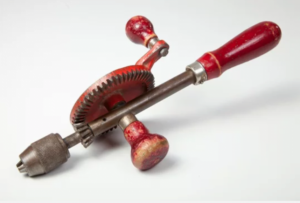The world has undergone massive technological advancements in the past few decades. Things that were once ubiquitous have now become outdated, replaced by newer, more advanced counterparts. One such object that holds a special place in the memories of those who grew up before the 1980s is the hand drill.
For those who may not be familiar, a hand drill is a tool used to create holes in various materials, including wood, metal, and plastic. It consists of a long cylindrical body with a chuck at one end to hold the drill bit and a handle at the other end to provide leverage for the user.
Hand drills were once a common sight in households, workshops, and factories. They were an essential tool for woodworking, metalworking, and other craft activities. Before the inve

Using a hand drill requires skill and patience. Unlike power drills, which can drill through materials with relative ease, hand drills require the user to exert physical force to turn the drill bit. This makes them slower and more labor-intensive to use, but also more precise and controlled.
One of the advantages of hand drills is their portability. They are lightweight and compact, making them easy to carry around and use in tight spaces. They also don’t require electricity or batteries, making them ideal for outdoor activities such as camping or hiking.
Despite their many benefits, hand drills have largely been replaced by power drills in recent times. Power drills are faster, more efficient, and require less physical effort to use. They have become the go-to tool for most drilling tasks, relegating the hand drill to a nostalgic relic of the past.
Advertisement





